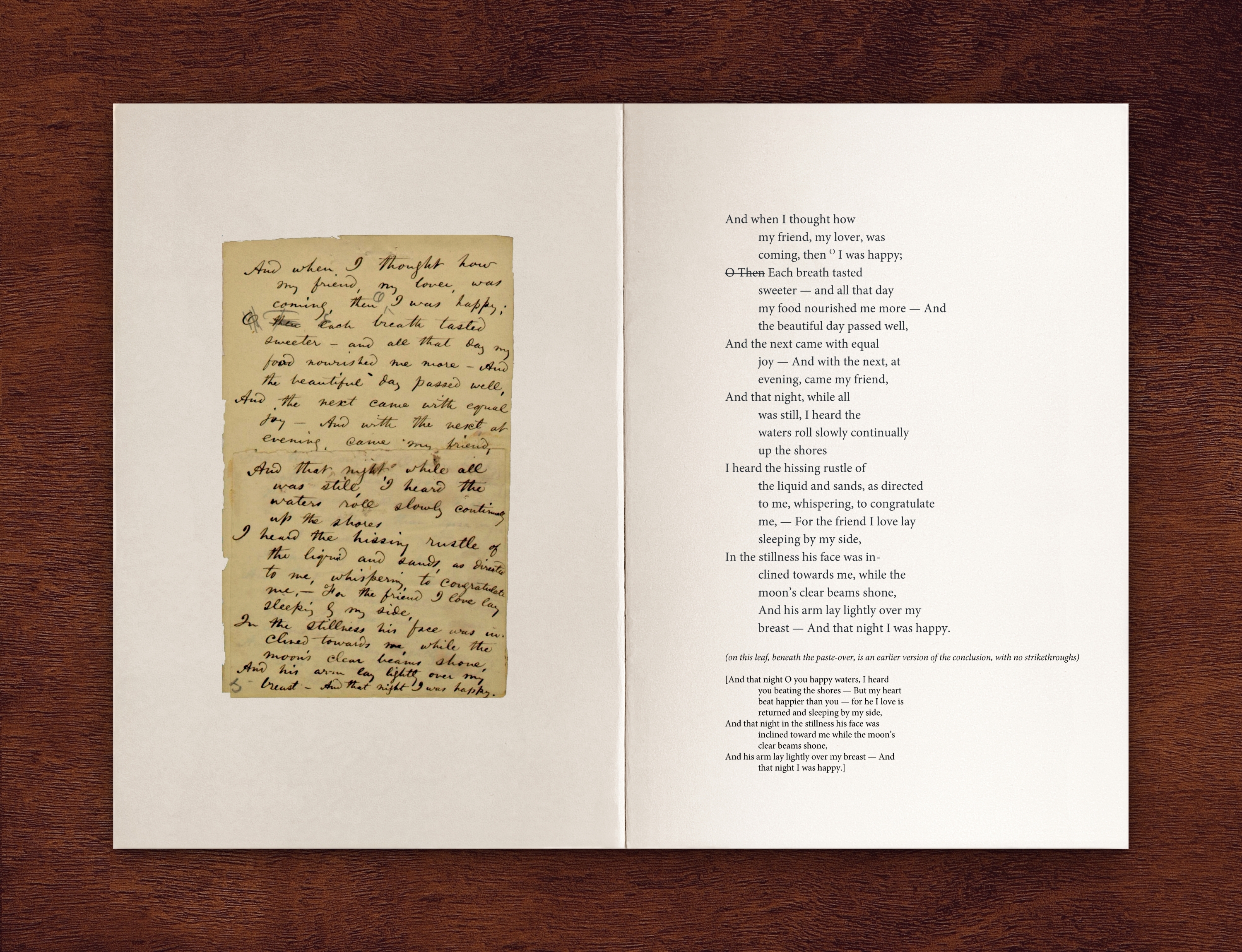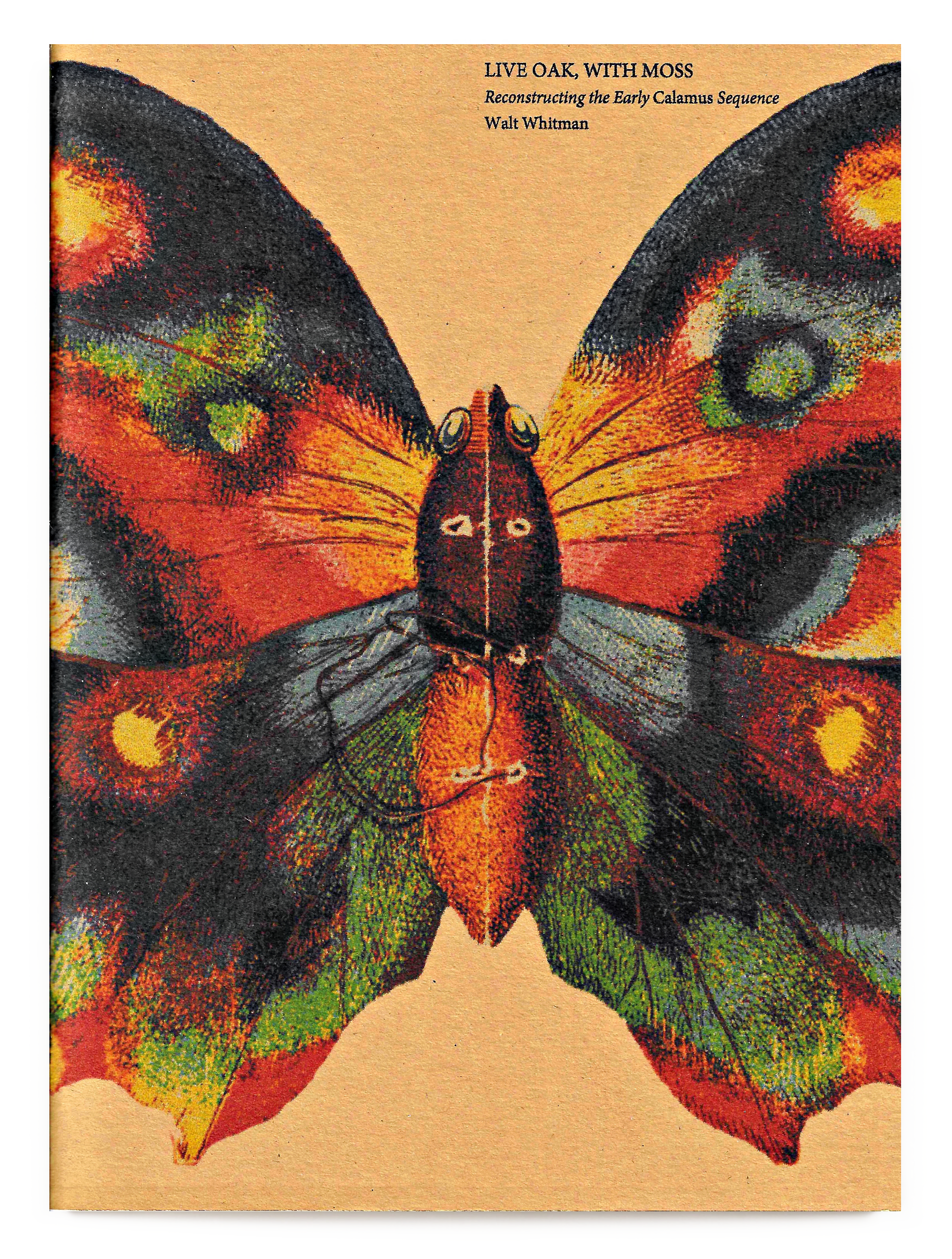LIVE OAK, WITH MOSS
Reconstructing the Early Calamus Sequence
Reconstructing the Early Calamus Sequence



Fredson Bowers, who first discovered the early Calamus cluster, described the topical poems as “narrating an unhappy love affair … having special autobiographical significance for Whitman.”
Later, while visiting the Berg Collection in New York, Bowers came across a note in Whitman’s handwriting on the back of a separate ms. that contained parts of the first “Live Oak” poem and spoke to the general vision of the early sequence:
Poems
A cluster of poems, sonnets expressing the thoughts,
pictures, aspirations, &c
Fit to be perused during the days of the approach of Death.
(that I have prepared myself for that purpose.—
(Remember now—
Remember the[n]
“Live Oak, with Moss” is published here as a stand-alone collection, separated from the larger sequence and reconstructed as originally written and ordered by Whitman. Photos of the manuscript are accompanied by transcriptions, including edits, on facing pages.
Author: Walt Whitman
Editor: Anthony Opal
Booklet, 48pp, 7 x 5.25 in
Language: English
ISBN: 978-1-7356630-7-4
Published: December 8, 2020
